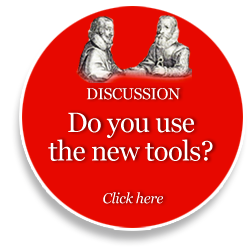People who have edited large newspapers know journalism psychology. If city hall was on fire, editors could call reporters in the middle of the night, and no matter how senior they were, they would get up and go. A little cursing, maybe, but no argument.
Picture that same veteran reporter coming in after the fire. If I told him to forget about working at his desk, and instead sit on the other side of the newsroom to write the story, there would be hell to pay. “This is MY spot,” he would growl. Followed by a lot of cursing, maybe, and a big argument.
That’s journalism psychology. It is fine for news to change every second. It is not fine to change the way we do the news. News changes fast; not so, culture. Deadlines do this to people. Look at hospital emergency rooms or military combat units. Doctors and soldiers stick to the basics or things turn ugly. For a long time, being a workplace fundamentalist worked. (The book News, Improved explains how training can lessen defensiveness).
A notebook, a pencil, a manual typewriter. That’s all a reporter needed in 1870 and that was all we needed in 1970. But change came, in the form of electric typewriters, mainframes, dummy terminals, personal computers and cell phones. We had to learn new ways to put the story into the news assembly line. Now, the innovations come not every few years but every few weeks. This has made some of the older folks more than a little anxious. They call them “fads” and “gizmos,” the same labels that have greeted every new form of media.
To help out, the American Press Institute and Poynter Institute have started an online tutorial series to show journalists how to use new tools. DocumentCloud was the first: You can still see the tutorial showing how to use it to tame paper documents. Advanced uses included USA TODAY’s “Ghost Factories” investigation revealing toxic wastes at abandoned factories across America.
I asked Knight’s Journalism and Media Innovation team exactly what journalists should be learning. Here’s the list, updated as of this writing:
- DocumentCloud: annotates, publishes and manages documents; shares information across newsrooms.
- Tor: allows journalists and sources to communicate securely online by bouncing communications around a network until they can’t be traced back.
- Timeline.js: Creates timelines about any story you can link to or embed. Great for developing graphic skills.
- Scraper Wiki: A more advanced tool. You can write computer code to acquire, clean and analyze data sets. Or you can request the Scraper Wiki community of data scientists to do it.
- TileMill/Map Box: A simple way to make your own maps, to use in apps.
- Frontline SMS: Used all over the world, this mobile texting device lets you communicate with large numbers of people in an organized way.
- Zeega: A mixed media packaging tool that allows you to make interactive documentaries in new formats with sound, videos, pictures and text.
- Amara: A volunteer-driven translation system that can turn any video in any language into a captioned, understandable piece.
- Ushahidi: As we’ve noted, perhaps the most popular of them all, a powerful yet simple crowd sourcing system that allows any group of people using cell phones to “map” just about anything.
- Poderopedia: Analyzes relationships among civic, political and business leaders in a country, or a city, or a company or any organized collection of people. Visualizes relationships within these power and influence networks.
These are some of the most useful tools. New lists appear constantly, if you want to learn more. I like Overview, which helps find stories in documents by sorting them and making it easy to see what’s there; video notebook, which lets you annotate audio and video content and sync video with tweets; Storify, which helps you collect and republish social media, and Panda, a database helper geared toward public information.
Overview, Zeega and Spundge also have been subjects of online tutorials, all of them free at News University as part of the permanent, Knight-endowed tutorial series. Did you notice how many of the new software tools are types of digital filters? The news community needs sunglasses even more than everyone else.
Thousands of journalists are learning these new tools. Yet most are not, and more innovations are coming. In a generation, maybe less, they will begin to arrive daily. For the first time, both the news and the way journalists do it will change constantly.
Perhaps it will not be as frightening as it sounds. I don’t even remember the last time I saw a manual typewriter. I am writing this on a tablet for a blog to be read on smart phones and, I hope, Googled, Tweeted, Facebooked and (to use a 20th century verb) debated. This is the real world, as growing, changing and boundless as the human need to know.
This is an updated version of a Knight Blog post.
- OFF
- ON
-
Chapter one
-
Accepting continuous change
-
A history of the future of news
-
The opportunity: To Improve
-
To journalism students: Yes, there are jobs
-
Skills for digital adventurers
-
Innovation, transparency and collaboration
-
Digital tools can open up newspapers
-
Ten tools to learn, more to explore
-
The evolving profession of journalism


















 Learning layer directory
Learning layer directory
